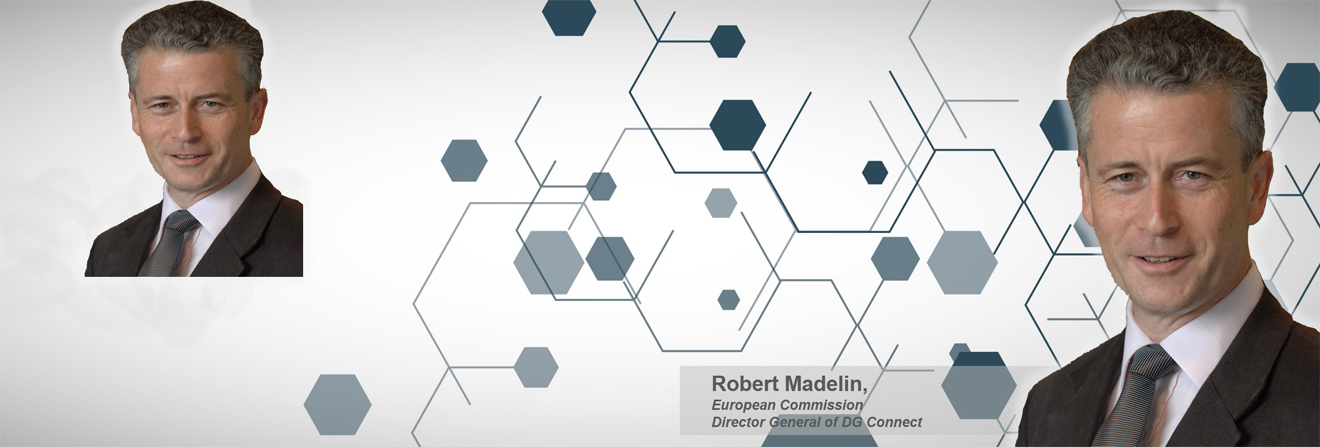Questions to Robert Madelin, European Commission, Director General of DG Connect.
Protection of minors online is a big topic, and this week a seminar will discuss the challenges and responsibilities involved. One of the speakers is the European Commission’s Robert Madelin, Director General of DG Connect. Netopia asked his views on the topic at hand.
Per Strömbäck: How important is protection of minors online in relation to other priorities?
Robert Madelin: Nowadays digital technologies are an intrinsic part of society, and kids’ lives encompass both online and offline realities. Protection is only partly the answer: we have to look at the challenges more broadly. To make Europe a competitive actor, the Digital Agenda for Europe aims to get every European digital. We need to empower and support children and young people in developing the right skills to help them become responsible and participative citizens also online.
PS: What are the main threats?
RM: In Web 3.0 the 3 Cs (content, conduct, and contact) represent the types of risk. The Internet was created by adults for adults, and research tells us that kids are still lacking enough positive and age-appropriate content. They interact through social networks and chat rooms where they are often confronted with problems like cyberbullying or crimes like grooming and identity theft. Kids are not always victims; they are also creating some of the challenges. Anonymity versus privacy is one big challenge.
PS: Who is more responsible for protecting children? Parents? Content providers? Technology manufacturers/internet services? Government?
RM: Meeting these challenges is a shared responsibility. Depending on the issue (access to content, choice of specific product, problematic behaviour, etc.), parents, schools, or industry could be better placed to mitigate the problem. To address this, we need multi-stakeholder partnerships: this is what the EC is doing with the European Strategy to make the internet a better place for kids (BIK). Another example is the CEO Coalition, where more than 30 companies from the whole value chain have committed to take positive and concrete actions to make the internet a safer place for kids.
PS: What are the main tools for protecting children online? How do you see the role of the intermediaries?
RM: Younger children need protection to a greater extent than teens, who need to build digital skills. Parental tools are very useful for supporting very young users, and the companies in the CEO coalition have committed to making them available on all their relevant products. That said, it is very important to scale up awareness to kids, parents, grandparents, and teachers in the context of formal and informal education. As recently discussed at the Safer Internet Forum, peer-to-peer mentoring is very effective and worth investigating further. Here again, multi-stakeholder partnerships are crucial to ensure adequate outreach and to implement solutions proportional to the size of the problem.
PS: Is there a risk that too-tight regulation of online services may stifle innovation?
RM: Regulation is considered when really needed—e.g., combatting online sexual abuse or providing data protection. The point to bear in mind is that technologies and user behaviour evolve much more rapidly than legislation traditionally does. We want European industry to innovate and to provide good services and products for the benefit of the users. And we believe that the best way to achieve this is to encourage industry to step up and be responsible through well-functioning self-regulatory approaches.
PS: Across Europe there are numerous different age-rating systems, both for different types of content and national regulation. How do you see this in terms of the digital single market vision? Different sorts of content are controversial in different parts of Europe. How is this challenge best addressed?
RM: Cultural diversity is part of our European identity, and harmonisation is not the answer to the classification of content and different parenting styles. We want industry to develop according to the convergence of the different technologies and services across borders so that parents and young people are able to make informed choices. For example, there are some pilot activities looking into interoperability of classification of content: the goal is to provide end users with information on the content they access across Europe.
Per Strömbäck
Editor Netopia


